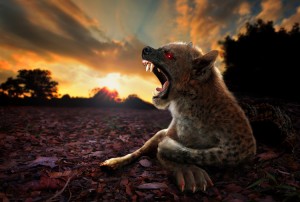Chupacabra: a Modern-Day Monster Monday
Monday, June 13th, 2016June 13, 2016
The mysterious and ferocious chupacabra is a rare modern-day monster. Unlike such legendary beasts as the Yeti or the Loch Ness monster—known from tales that go back hundreds of years—stories of the chupacabra are quite recent. The first reported sighting of a chupacabra was in 1995 by a woman in Puerto Rico. This ferocious beast is said to be about 4 feet (1.2 meters) tall, walking on two legs, with large eyes, fangs, and raised spikes along its back. But how can such a terrifying monster remain undiscovered in this day and age with cell phone cameras and instant messaging?
News of the initial chupacabra encounter quickly spread, and soon other people claimed to have seen the creature. The voracious chupacabra is said to often attack farm animals—particularly chickens and goats—in the middle of the night. El chupacabra is Spanish for the goat-sucker. According to modern legend, Chupacabra victims are found completely drained of blood, with their lifeless carcasses left behind to be discovered by frightened landowners. Since 1995, there have been hundreds of reported sightings of the mysterious beast, mainly in Mexico and South and Central America. Other sightings, however, have been reported as far away as Texas and Maine in the United States and even in Russia.
Some investigators consider the chupacabra to be a cryptid. A cryptid is a living thing whose existence has been suggested but not demonstrated (see cryptozoology). The monstrous chupacabra does not resemble any known animal, leading to much speculation about its origins. Some people believe the creature could be a weird kind of hybrid—the result of interbreeding among coyotes, wolves, or dogs, and possibly with other animals such as raccoons, bears, or mountain lions. Biologists consider such interbreeding highly unlikely. Some conspiracy enthusiasts say that the chupacabra is the result of secret genetic testing carried out on animals by the United States government. However, no real evidence supports this theory.
Scientists do not believe the chupacabra actually exists. They think that reported sightings are more likely the result of imagination, misidentification of other animals, or deliberate hoaxes. Investigators point out that the first person to “see” a chupacabra had just seen a movie that featured a monstrous creature—a creature that just happens to fit the description of a chupacabra.
But unlike many legendary cryptids, where sightings are usually considered unreliable, there are photographs of supposed chupacabras. People have even reported finding chupacabra bodies. However, each chupacabra corpse has proven to be a dog, coyote, raccoon, or other common mammal—often stricken with a severe case of mange, a skin disease that often causes an animal to lose its fur and take on a gaunt, monstrous appearance.



